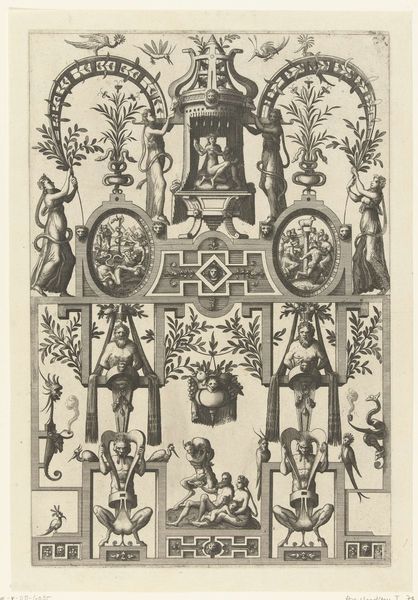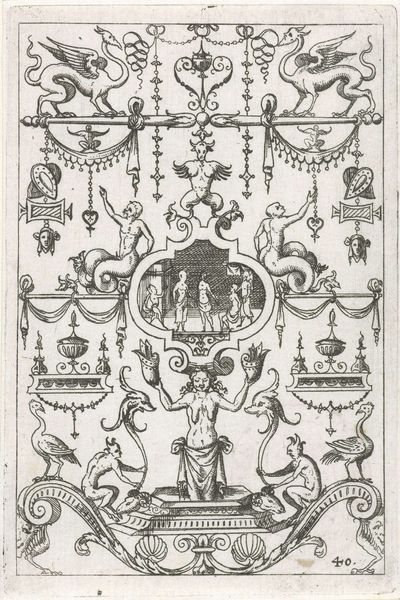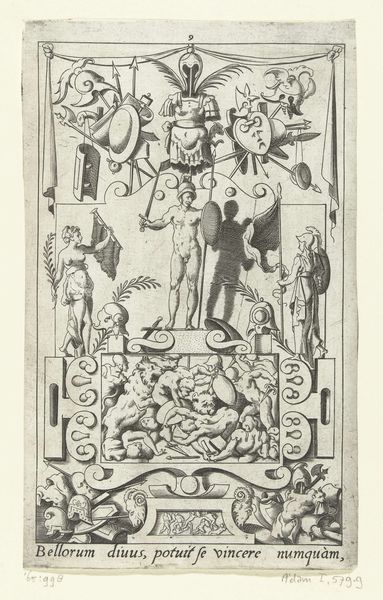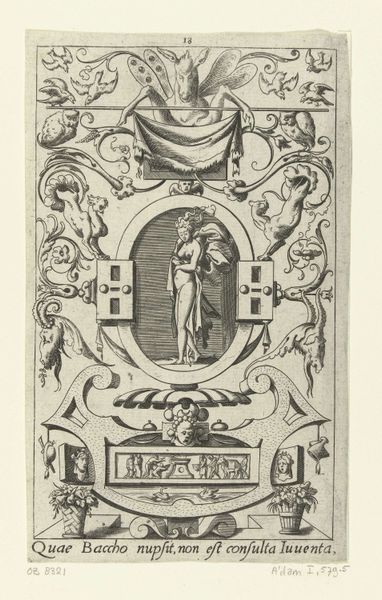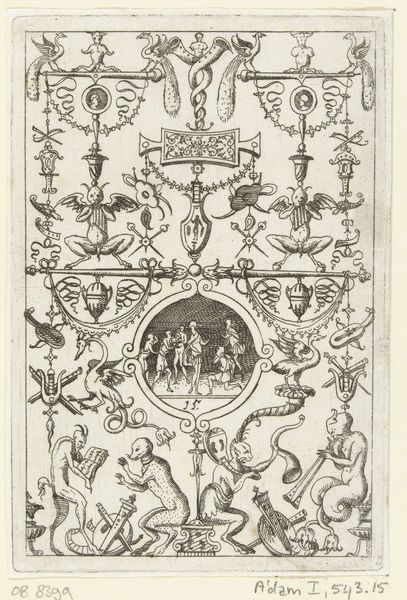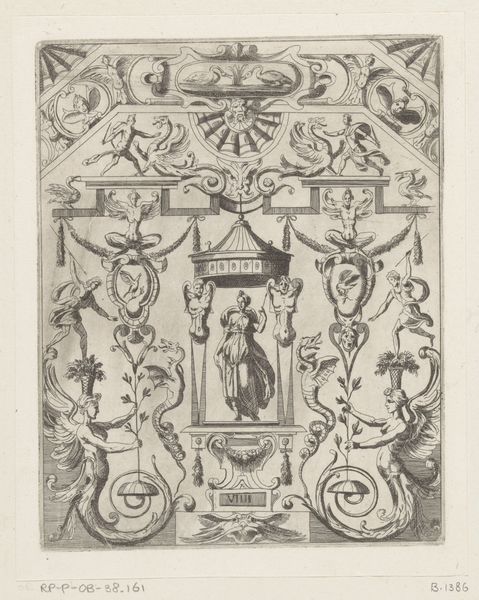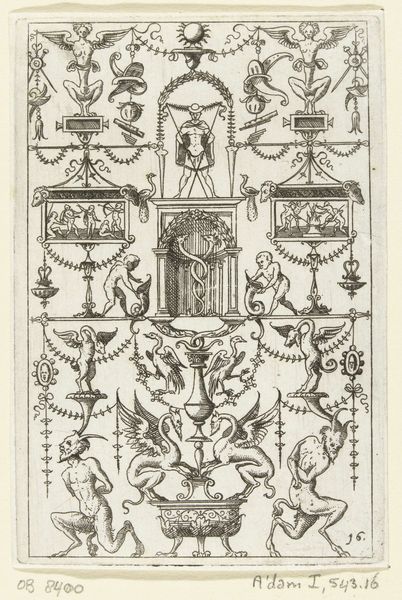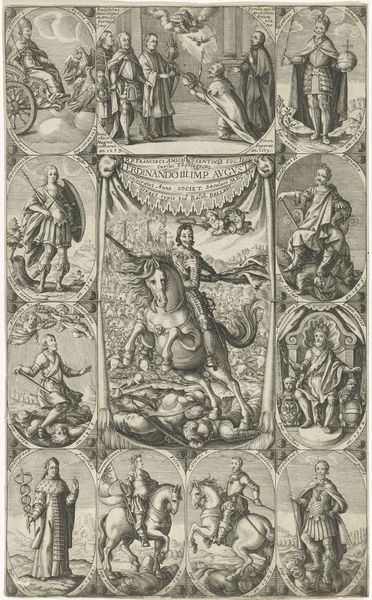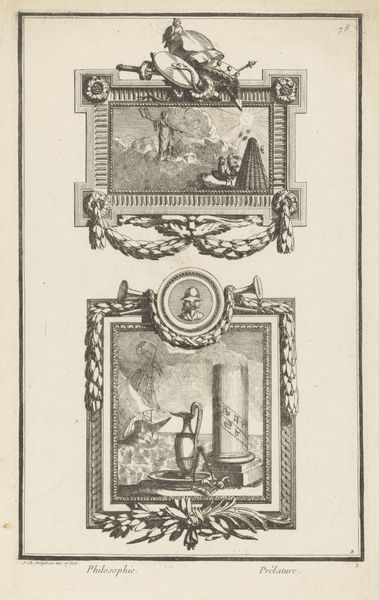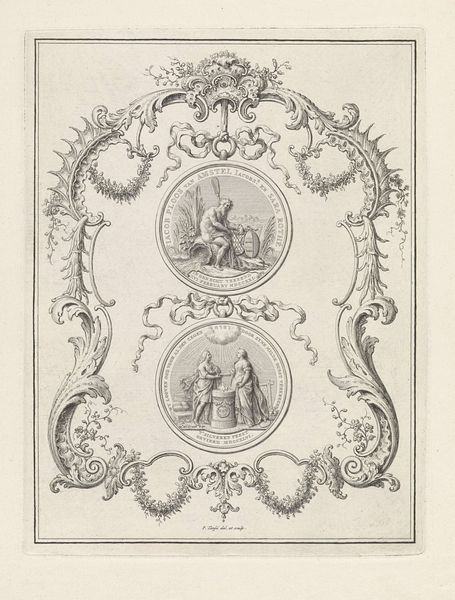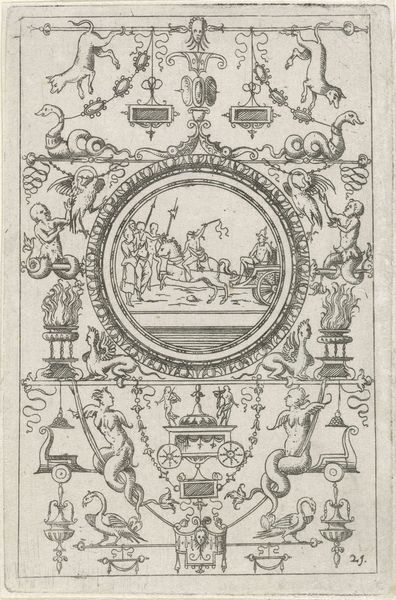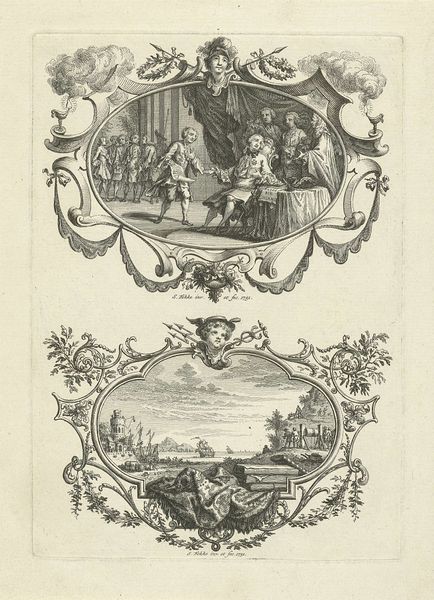
print, engraving
#
allegory
#
baroque
#
dutch-golden-age
# print
#
old engraving style
#
landscape
#
cityscape
#
history-painting
#
engraving
Dimensions: height 182 mm, width 138 mm
Copyright: Rijks Museum: Open Domain
Curator: Here we have Caspar Jacobsz. Philips’ engraving, “Meiboom geplant door de Haagse Schutterij, 1759,” created in 1759 and residing here at the Rijksmuseum. What's your initial impression? Editor: At first glance, I find this work dense and meticulously compartmentalized; the composition looks almost like a sampler, featuring a series of distinct vignettes, which seems orderly but maybe too formal? Curator: Yes, its structural integrity hinges on these very distinct frames around each vignette. I would analyze them as carefully constructed units. Note how the artist uses the ornate, baroque frame not just as decoration but as an active element that dictates how we parse the individual allegorical images. Editor: Agreed. Viewing the artist's method historically, the allegory within, that celebrates The Hague's civic pride with symbols and allusions that perhaps would have spoken powerfully to its 18th-century audience, yet today feels a bit…opaque. I find myself trying to decode what each panel might say about societal values of that period. Curator: Certainly, each element functions semiotically. Consider how Philips uses contrast within each frame—dark and light, busy versus spare—to guide our eyes to essential symbolic details. The relationship between these visual binaries establishes the groundwork for the broader allegory. The light literally pours forth to expose underlying ideas. Editor: I do see what you mean. As an activist viewer, I think about how we translate historical expressions of civic celebration in a time deeply involved with questions of who enjoys such celebration—questions around exclusion, belonging and social position. How might an 18th-century member of the Schutterij engage this compared to someone outside its protected circles? Curator: The level of detailing evident is astonishing and demonstrates a high level of craftsmanship. The burin strokes on the copperplate are used strategically, thus shaping form. And this gives rhythm and weight to Philips' engraving! Editor: Right! Seeing Philips' work inspires me to reflect upon which historical threads connect us and question the rhetoric of nationhood! How have forms of "civic pride" advanced inclusion…or promoted exclusivity? Curator: That is the intrinsic wonder of art, I think: while Philips focuses upon formal technique to highlight his central symbols, the themes present can encourage much dialogue on sociohistorical awareness and values. Editor: It really does reveal the powerful insights when art and cultural context align! Thanks to Philips, this visual and social exchange urges viewers to revisit art's intrinsic complexity and place it within cultural realms!
Comments
No comments
Be the first to comment and join the conversation on the ultimate creative platform.
